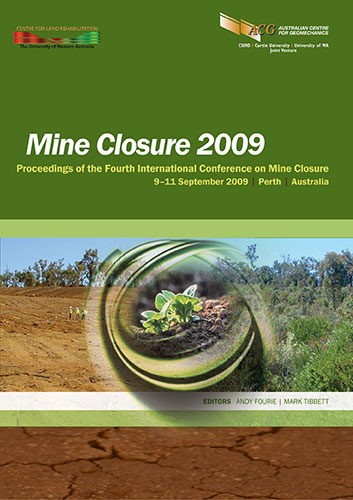Key closure planning considerations

|
Authors: Bentel, GM |
DOI https://doi.org/10.36487/ACG_repo/908_Bentel
Cite As:
Bentel, GM 2009, 'Key closure planning considerations', in AB Fourie & M Tibbett (eds), Mine Closure 2009: Proceedings of the Fourth International Conference on Mine Closure, Australian Centre for Geomechanics, Perth, pp. 41-54, https://doi.org/10.36487/ACG_repo/908_Bentel
Abstract:
Mining operations generally have long operating lives, and closure planning must be carried out to a sufficient level of detail to provide a reasonable level of accuracy of the costs of rehabilitation and closure. In 2004 BHP Billiton mandated closure planning at all assets in compliance with a risk-based closure standard. In 2009 BHP Billiton embedded closure planning into its business systems by integrating closure engineering and planning into its life of asset planning process. To ensure that all aspects of closure are fully considered in the planning process, BHP Billiton has developed a set of key closure planning considerations. This paper discusses these closure planning considerations and the importance of an integrated life of mine planning process.
References:
BHP Billiton (2004) BHP Billiton Closure Standard, 2004 (now obsolete internal document).
Department of Industry, Tourism and Resources (DoITR) (2006) Australian Government DoITR Leading Practice
Sustainable Development Guideline on Mine Closure and Completion, October 2006.
International Council on Mining and Metals (ICMM) (2008) Planning for Integrated Mine Closure: Toolkit, 2008.
© Copyright 2025, Australian Centre for Geomechanics (ACG), The University of Western Australia. All rights reserved.
View copyright/legal information
Please direct any queries or error reports to repository-acg@uwa.edu.au
View copyright/legal information
Please direct any queries or error reports to repository-acg@uwa.edu.au